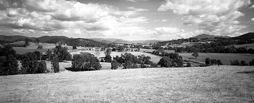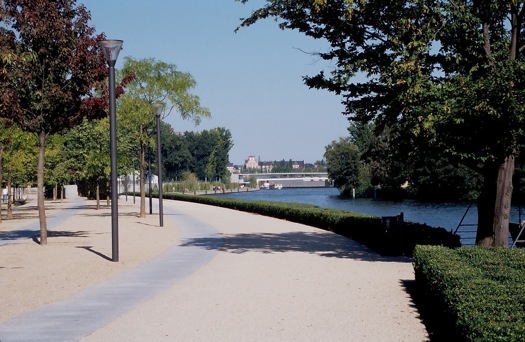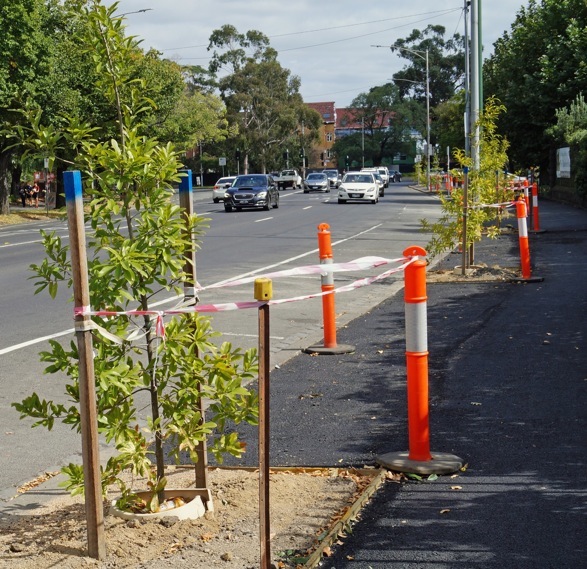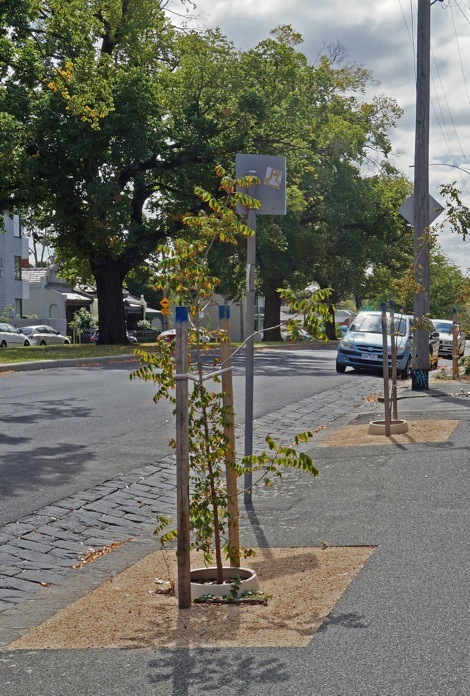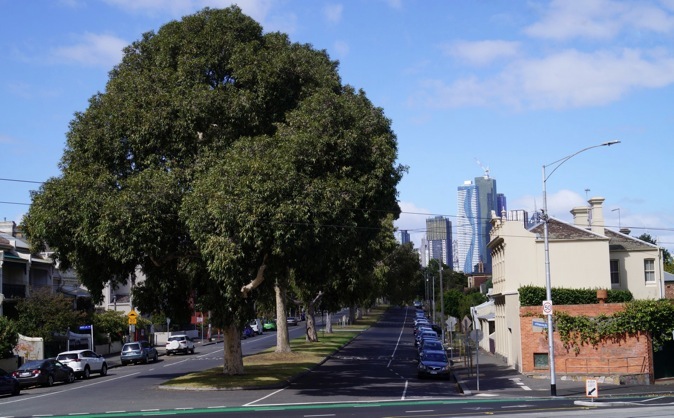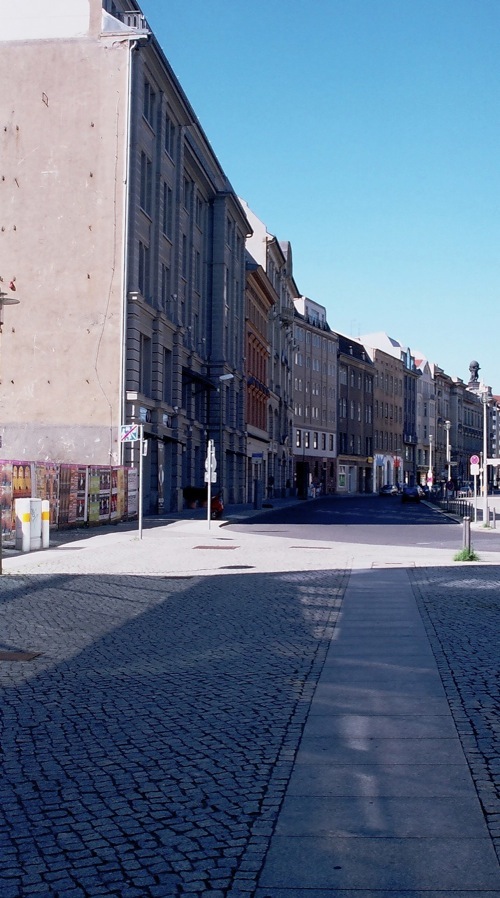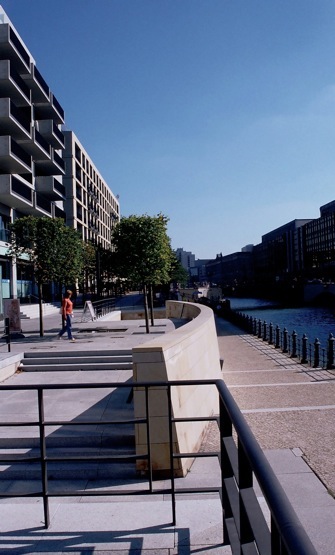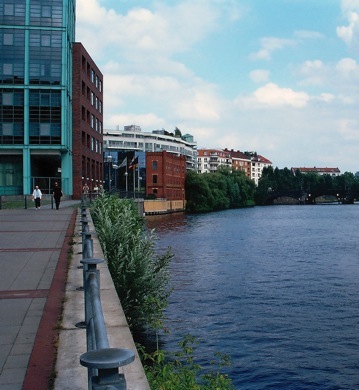RESEARCH

Current research is concerned with re-naturing cities; green infrastructure and the planning of it; and urban forests and constructed wetlands as expressions of nature-based solutions (with a focus on climate change adaptation). Work so far has included a study on green infrastructure with reference to Berlin (Working Paper 3), and an analysis of the ethical and theoretical assumptions/influences underlying Melbourne’s Urban Forest Strategy (Working Paper 4). Latest research concerns constructed wetlands in Canberra, ACT.

Green infrastructure and green infrastructure planning: a review of concepts and practices
with particular reference to Berlin, Germany (WORKING PAPER 3)
ABSTRACT: This study aims to clarify the nature and characteristics of green infrastructure and green infrastructure planning; to identify general planning principles for green infrastructure; and to formulate pertinent research questions with respect to green infrastructure planning. A literature review and Berlin case study are employed to achieve these aims.
While there are numerous definitions of green infrastructure, it is generally considered to comprise a network of green spaces and water features. Two key characteristics of green infrastructure are identified viz. multifunctionality and connectivity. These lend some commonality to what may at first appear as disparate definitions. Importantly, green infrastructure makes a critical contribution to the three components of sustainability viz. environment, economy and equity. The multifunctional nature of green infrastructure is pivotal in this role, whether one is considering functions or benefits.
Green infrastructure planning is a strategic planning approach which aims to create multifunctional networks across landscape scales, from regional to city to neighbourhood. It can be viewed as an activity within the field of landscape planning, and has links to urban planning, regional development planning and social planning. The case study city, Berlin, has a strong focus on this sort of planning, with its Land Use Plan providing a framework for a city-wide green infrastructure characterised by both connectivity and multifunctionality.
As for green infrastructure planning principles, three examples spanning the years 2006 to 2016 are reviewed. The influence of landscape ecology is pervasive, particularly in regard to connectivity. Two additional principles (along with strategies) are suggested. The first is: green infrastructure planning should emulate ‘indispensable patterns’ in both urban and rural landscapes; and the second: green infrastructure planning should be aligned with the statutory land use planning process. Finally, a number of general and Berlin-specific research questions are put forward. It is also suggested there is a need for a comparative case studies between cities, since studies across locations are relatively rare.
It is concluded that green infrastructure is a significant and increasingly influential concept. In dealing with this complex and multi-faceted concept, green infrastructure planning has several significant challenges, one of the more important is how to integrate it within the statutory land use planning process, or at the very least, how to maximise its influence on that process. At stake is not only the continued implementation of sustainable development, but also progress in the urgent task of climate change mitigation and adaptation.
Key Words: Green infrastructure; green infrastructure planning; Berlin; multifunctionality; connectivity; landscape ecology.
Urban Forest Strategy for the City of Melbourne: Ethical and Theoretical Assumptions and Influences (WORKING PAPER 4).
ABSTRACT: This paper critiques the City of Melbourne’s Urban Forest Strategy in relation to: (a) its ethical standpoint; and b) the planning theory underlying it. It is found that the Strategy is characterised by a utilitarian ethical perspective, proposing an urban forest across all suburbs, for the benefits of all residents, regardless of their relative levels of advantage/disadvantage. The ethic of ‘enlightened self-interest’ is also evident, since while the Strategy is essentially anthropocentric in outlook, it is nonetheless 'enlightened' in recognising other values such as habitat for other species and enhancing levels of biodiversity. As for planning theory, the most obvious theoretical influence stems from Environmentalism and the notion of sustainability, overlaid by the issue of climate change. Both are linked to the urban forest throughout the document. The message is clear: the urban forest provides a range of benefits, these in turn contribute significantly to the sustainability of the city; and, the urban forest is an important element in both adapting to, and mitigating climate change. Other influences are much more speculative. They include the possible influence of communicative/collaborative planning theory on public participation/community engagement, and the 'trace influence' of the Radiant City and Garden City as indicated by the images within the document.
Key Words: Urban Forest Strategy; City of Melbourne; utilitarian ethical perspective; enlightened self-interest; Environmentalism; sustainability; climate change; communicative/collaborative planning theory.
Urban Forest Strategy - Implementation: New street tree plantings in College Crescent, Carlton (above) and North Melbourne (below) (Photos: RJ Carne, 2018).
The established urban forest juxtaposed against the built form (CBD in background) - Corymbia maculata (Spotted Gum) in Chapman Street, North Melbourne (Photo: RJ Carne, 2018).
The City in Art and Literature: Berlin (WORKING PAPER 5).
ABSTRACT: This working paper examines Berlin as an example of ‘the city in art and literature.’ Representations from photography and literature are discussed, and an attempt is made to discern what certain images and written narratives ‘say’ about the nature of Berlin. The focus is on a particular period in this city’s long history viz. the period after the fall of the Wall (i.e. post-1989). For photography, the images contribute to a synoptic description of the city. They show a city unlike the much vaunted New Berlin. In particular, significant urban spaces for the Berliner may be small and visually quite unremarkable. Such spaces stand in marked contrast to the spaces and architectural forms of the New Berlin. It is also apparent that many vacant sites in Berlin carry the weight of an unpleasant Nazi past, and as sites of remembrance are therefore significant. The question remains as to how they are to be treated – memorialised or simply built over? For literature, no single narrative portrait or ‘master narrative’ can be said to characterise post-Wall Berlin. Rather, a multiplicity of views, opinions and experience are reflected in the literature. Nonetheless, two elements which appear to contribute to what might be termed a Berlin ‘meta-narrative’ have been identified. These include the relationship between politics, planning and history; and the impact of global capital on city form (and thus on the city’s inhabitants).
Other research activities have focused on questions relating to the ‘intersection of aesthetics and ecology’ - the figure below shows some of the elements comprising this intersection, broadly characterised here as 'concepts, views and opinion' and 'theoretical and applied studies'. The elements noted are those of interest within the field of Landscape Architecture.
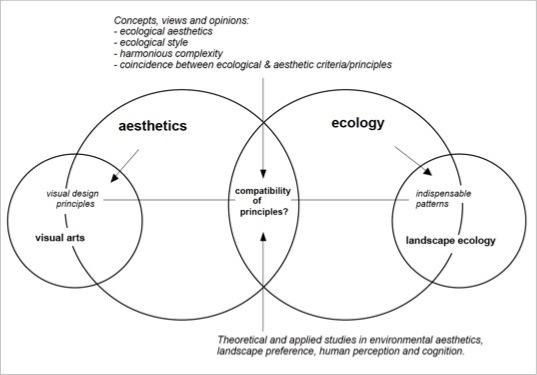
Within this context one of the central questions is: Is there a coincidence between aesthetics and ecology? There is widespread, largely intuitive view that there is. This is expressed in various ways, from the simple notion that 'if it looks nice it must be ecologically viable', to the more complex idea that aesthetic principles and ecological principles go 'hand-in-hand' (e.g. the aesthetic and ecological value of complex edges). Beyond this, there is the somewhat esoteric view that ecology and aesthetics are intimately linked via a common underlying principle, namely, that of 'harmonious complexity'. To-date, my interest has been mainly in visual design principles (i.e. principles derived from the visuals arts) and their compatibility with principles derived from landscape ecology (i.e. indispensable patterns), and this within the context of landscape planning and design. But why is the compatibility question important? Given that contemporary landscape design is commonly about both visual appeal and ecological value, the question arises as to whether very different sets of principles, like visual design principles and indispensable patterns, are able to be implemented in the same design without one overriding the other. From the perspective of ecologically-based planning, for example, there is little point in implementing an ecologically derived spatial concept only to find that attempts to make the configuration visually attractive (i.e. by applying visual design principles) results in a disassembled pattern without ecological integrity. On the other hand, from an aesthetic viewpoint it is undesirable that ecological principles override those directed toward creating a visually appealing landscape. This is simply because the appearance of landscape matters a great deal. Importantly, the compatibility question also relates to the integration of landscape architecture and landscape ecology - progress toward integration can hardly be claimed if important principles from the respective fields are clearly contradictory.
Two working papers are noted below – the results of these investigations so-far.
-
-Visual design principles for forested landscapes: a review of key publications with suggestions as to why such principles may be important (Working Paper 1).
-
-Can visual design principles produce ecological outcomes? A study in hypothetical design and the application of content analysis to student design drawings (Working Paper 2).
-
-
ABSTRACT: When ‘hypothetical design’ is placed the context of empirical research the issue of how to deal with design drawings as data arises. Present research highlights some aspects of the problem viz. when content analysis was applied to design drawings showing the application of visual design principles (with the aim of determining whether the drawings indicate ‘ecological outcomes’) the results showed a persistent lack of agreement between coders in assigning categories. This, in turn, indicated problems in interpreting the content of the drawings in a consistent way. Overall, the results illustrate the difficulties in dealing with drawings in a systematic and objective way. This has implications for hypothetical design as a research approach since design drawings are one of its main ‘data outputs’. Suggestions are made as to how to make drawings of this sort more amenable to quantitative content analysis. A qualitative approach is suggested as a possible alternative.
Key words: hypothetical design, visual design principles, indispensable patterns, content analysis.


